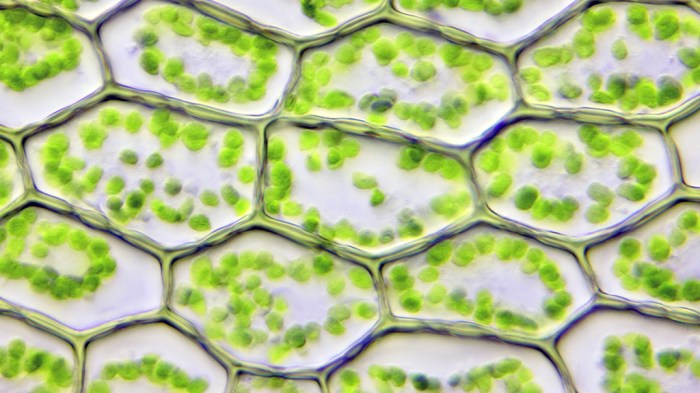Killing chloroplasts herbicides targeting photosynthesis – Herbicides targeting photosynthesis, specifically those aimed at killing chloroplasts, present a fascinating and complex topic in the realm of plant science. This comprehensive overview delves into the intricate mechanisms of these herbicides, their impact on chloroplast structure and function, and the broader implications for agriculture and the environment.
Chloroplasts, the photosynthetic powerhouses of plant cells, are essential for converting light energy into chemical energy, sustaining the growth and development of plants. However, certain herbicides have been developed to disrupt this vital process, effectively controlling unwanted vegetation.
Chloroplast Structure and Function

Chloroplasts are organelles found in plant cells that are responsible for photosynthesis, the process by which plants convert sunlight into energy. They have a double membrane structure, with an outer membrane and an inner membrane. The inner membrane contains thylakoids, which are flattened sacs that contain chlorophyll and other pigments.
These pigments absorb sunlight and use it to generate ATP and NADPH, which are energy-carrying molecules. The thylakoids are stacked together to form grana, which are connected by stroma, a fluid-filled space.
Chlorophyll is the primary pigment involved in photosynthesis. It absorbs blue and red light, and reflects green light, which is why plants appear green. Other pigments, such as carotenoids and phycobilins, also play a role in photosynthesis by absorbing light that chlorophyll cannot.
The process of electron transport and ATP synthesis occurs in the thylakoids. When sunlight hits the chlorophyll molecules, it causes electrons to be excited. These electrons are then passed along a series of electron carriers, which generates a proton gradient across the thylakoid membrane.
The proton gradient is used to drive the synthesis of ATP, which is the energy currency of the cell.
Herbicides Targeting Photosynthesis
Herbicides are chemicals that are used to kill plants. There are many different classes of herbicides, but some of the most common herbicides target photosynthesis. These herbicides work by disrupting the process of electron transport and ATP synthesis, which prevents the plant from producing the energy it needs to survive.
The different classes of herbicides that target photosynthesis include:
- Triazines
- Ureas
- Phenylureas
- Carbamates
- Bipyridyliums
Each class of herbicide has a different mode of action. Triazines and ureas bind to the D1 protein of the photosystem II complex, which blocks electron transport. Phenylureas and carbamates bind to the QB protein of the photosystem II complex, which also blocks electron transport.
Bipyridyliums bind to the cytochrome b6f complex, which is involved in electron transport between photosystem II and photosystem I.
The selectivity of herbicides for different plant species is determined by the presence of specific target sites in the plant. For example, triazines are selective for broadleaf plants, while ureas are selective for grasses. This selectivity is important for preventing the herbicide from damaging non-target plants.
Effects of Herbicides on Chloroplasts: Killing Chloroplasts Herbicides Targeting Photosynthesis

Herbicides that target photosynthesis can cause a variety of ultrastructural changes in chloroplasts. These changes include:
- Disruption of thylakoid membranes
- Swelling of thylakoids
- Loss of chlorophyll
- Accumulation of starch
These changes can lead to a decrease in the rate of photosynthesis, which can ultimately kill the plant.
Herbicides that target photosynthesis can also disrupt electron transport and ATP synthesis. This disruption can lead to a decrease in the production of ATP, which is the energy currency of the cell. Without ATP, the plant cannot carry out essential cellular processes, such as protein synthesis and cell division.
The impact of herbicides on chlorophyll content and photosynthetic activity can vary depending on the herbicide and the plant species. Some herbicides can cause a rapid decrease in chlorophyll content and photosynthetic activity, while others may have a more gradual effect.
Resistance to Herbicides

Plants can develop resistance to herbicides that target photosynthesis. This resistance can be caused by a variety of mechanisms, including:
- Target site mutations
- Overexpression of target site proteins
- Increased metabolism of the herbicide
- Reduced uptake of the herbicide
Target site mutations are the most common mechanism of resistance to herbicides that target photosynthesis. These mutations can change the structure of the target site protein, which makes it less likely to bind to the herbicide. Overexpression of target site proteins can also lead to resistance, as this can increase the number of target sites available for the herbicide to bind to.
Increased metabolism of the herbicide can also lead to resistance. This can occur if the plant produces enzymes that break down the herbicide into inactive compounds. Reduced uptake of the herbicide can also lead to resistance, as this can prevent the herbicide from reaching its target site.
There are a number of different resistant weed species that have been identified. These species include:
- Triazine-resistant pigweed
- Urea-resistant soybeans
- Phenylurea-resistant corn
- Carbamate-resistant rice
- Bipyridylium-resistant wheat
The management of resistant weed species is a challenge for farmers. There are a number of different strategies that can be used to manage resistant weeds, including:
- Using herbicides with different modes of action
- Rotating herbicides
- Using cultural practices to reduce weed pressure
- Developing new herbicides that are effective against resistant weeds
Environmental Impact of Herbicides

Herbicides that target photosynthesis can have a number of potential environmental impacts. These impacts include:
- Toxicity to non-target organisms
- Persistence in the environment
- Bioaccumulation
Toxicity to non-target organisms is a concern with all herbicides, but it is particularly important for herbicides that target photosynthesis. This is because photosynthesis is essential for all plants, including non-target plants. Herbicides that target photosynthesis can kill non-target plants, which can disrupt ecosystems and reduce biodiversity.
Persistence in the environment is another concern with herbicides that target photosynthesis. Some herbicides can persist in the environment for long periods of time, which can lead to the accumulation of these herbicides in the soil and water. This can pose a risk to non-target organisms, as they can be exposed to these herbicides through contact with contaminated soil or water.
Bioaccumulation is the process by which herbicides accumulate in the tissues of organisms. This can occur when organisms ingest or absorb herbicides from the environment. Bioaccumulation can pose a risk to organisms, as it can lead to the accumulation of toxic levels of herbicides in their tissues.
There are a number of strategies that can be used to mitigate the environmental impact of herbicides that target photosynthesis. These strategies include:
- Using herbicides with low toxicity to non-target organisms
- Using herbicides that are not persistent in the environment
- Using herbicides that do not bioaccumulate
- Using herbicides in a way that minimizes their impact on non-target organisms
FAQ
What are the different classes of herbicides that target photosynthesis?
Herbicides targeting photosynthesis can be classified into several groups, including triazines, PSII inhibitors, and photosystem I inhibitors, each with distinct modes of action.
How do herbicides disrupt electron transport and ATP synthesis in chloroplasts?
Herbicides can interfere with the electron transport chain or block the synthesis of ATP, essential processes for energy production in chloroplasts.
What are the potential environmental impacts of herbicides targeting photosynthesis?
Herbicides can potentially affect non-target organisms, such as pollinators and beneficial insects, and may contribute to the development of herbicide-resistant weeds.